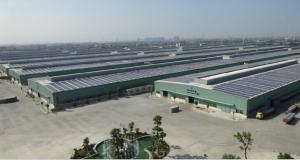Celik Solar Inverter
Celik Solar Inverter Related Searches
100w Solar Panel With Inverter Best Solar Panel Inverter 5000 Series Cast Aluminum Plate Portable Solar Panel Inverter First Solar Series 6 Module 12 Volt Solar Panel Inverter Plastic Solar Lanterns Buy Solar Panel Inverter Solar Panel Inverter Cost Solar Panel Without InverterHot Searches
Type Of Inverter For Solar Types Of Inverter For Solar Used Solar Inverter For Sale Inverter Size For Solar System Solar Edge Inverter For Sale 5kw Solar Inverter For Sale Solar Inverter For Sale Solar Inverter For Battery Solar Inverter For Split Ac Solar Inverter For Laptop Solar Inverter For Fridge Solar With Inverter Price Solar Inverter With 2 Battery Solar Inverter Price In China Best Solar Inverter In China Solar Inverter Price In Dubai Solar Inverter Price In Uae Solar Inverter Price In Kenya Solar Inverter Price In Kerala Solar Hot Water Collectors For SaleCelik Solar Inverter Supplier & Manufacturer from China
Okorder.com is a professional Celik Solar Inverter supplier & manufacturer, offers integrated one-stop services including real-time quoting and online cargo tracking. We are funded by CNBM Group, a Fortune 500 enterprise and the largest Celik Solar Inverter firm in China.Hot Products
FAQ
- A solar inverter handles anti-islanding protection by constantly monitoring the grid voltage. If the grid goes down or voltage drops below a certain threshold, the inverter automatically disconnects from the grid to prevent feeding power back into the grid during an outage. This ensures the safety of utility workers and prevents damage to the grid.
- The role of a maximum power point tracker (MPPT) in a solar inverter is to ensure that the solar panels are operating at their maximum power output. The MPPT continuously monitors the voltage and current of the solar panels and adjusts the operating conditions to find and maintain the maximum power point. This optimization helps to maximize the efficiency and overall energy generation of the solar system.
- A solar inverter handles shade on solar panels by utilizing a technology called maximum power point tracking (MPPT). MPPT allows the inverter to constantly monitor the output of each individual solar panel and adjust the voltage and current to maximize the power production. When shade is detected on a solar panel, the inverter automatically reduces the power output of the affected panel, ensuring that the shaded area does not significantly impact the overall performance of the system.
- Yes, a solar inverter can be used in standalone systems. Standalone systems, also known as off-grid systems, are not connected to the main power grid and rely on alternative energy sources such as solar power. In these systems, a solar inverter is essential as it converts the direct current (DC) generated by the solar panels into alternating current (AC) which can be used to power household appliances and other electrical loads.
- Yes, a solar inverter can be used with a solar-powered educational system. A solar inverter is a device that converts the direct current (DC) generated by solar panels into alternating current (AC) that can be used to power various electrical devices. In the case of a solar-powered educational system, the solar inverter would play a crucial role in converting the DC power generated by the solar panels into usable AC power for running electronic equipment such as computers, projectors, and other educational tools.
- Yes, a solar inverter can be used with a hybrid solar power system. A hybrid solar power system typically consists of both solar panels and a secondary power source, such as batteries or a diesel generator. The solar inverter converts the direct current (DC) power generated by the solar panels into alternating current (AC) power that can be used to power appliances and devices in the home or business. Additionally, the solar inverter can also manage the flow of power between the solar panels, the batteries, and the grid, optimizing energy usage and ensuring a reliable power supply.














































